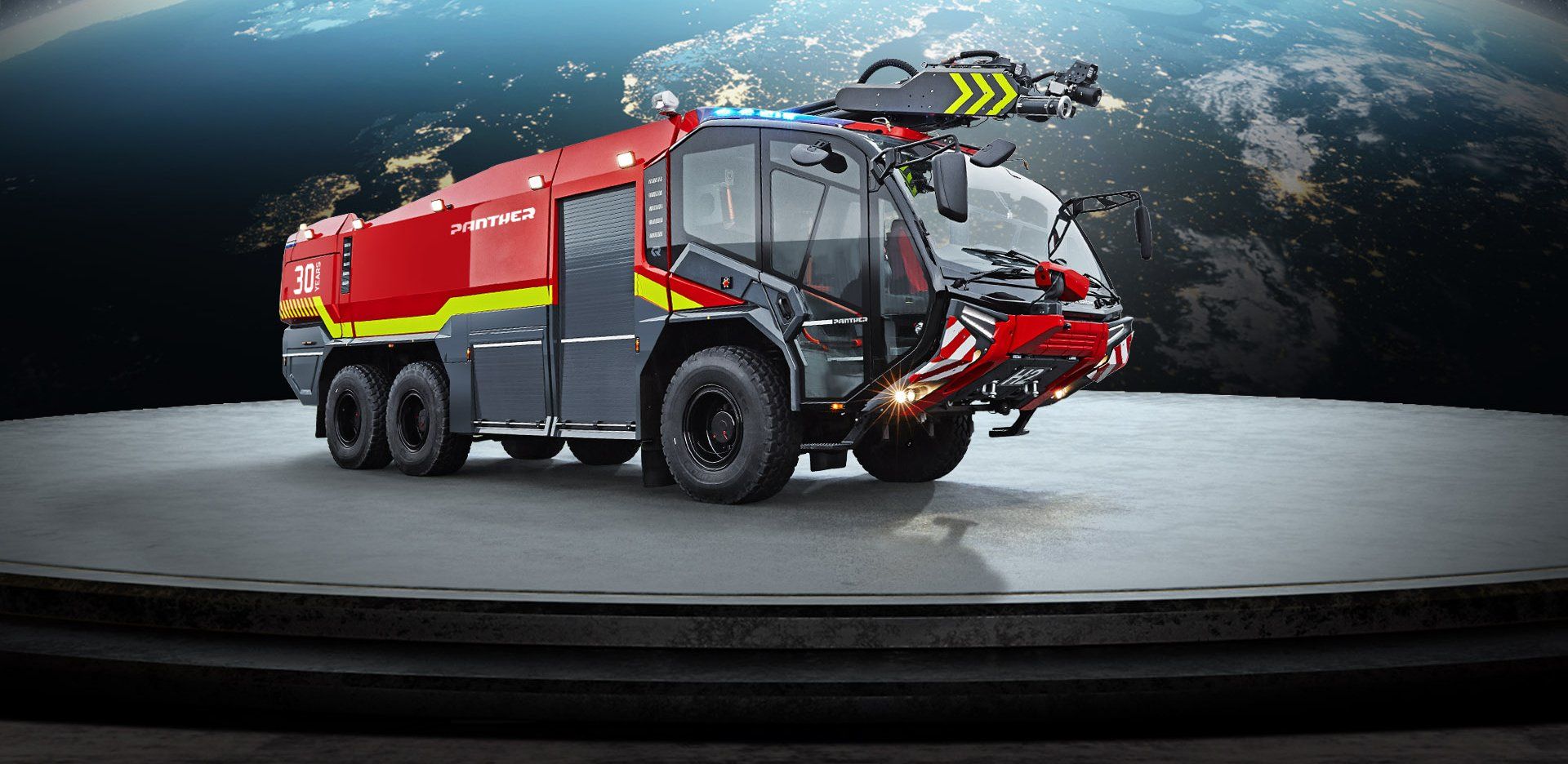PANTHER trio guards
Kraków Airport.
A lot of elbow grease on the country’s second-largest airport
Balice is a village in Małopolska, a Polish province on the Slovakian border. That may sound remote, but Balice is only a half-hour’s drive from Poland’s second largest city, Kraków. And literally a stone’s throw from Kraków Airport, which has even added Balice to its official name. Though the village itself only has one thousand inhabitants, for many Polish travelers it is something of a gateway to other countries. That’s a big responsibility for the firefighters in charge.
Operations at the airport—and beyond
Kraków–Balice International Airport has been used for civil aviation since 1964. This is also how long the aircraft rescue and firefighting (ARFF) service has been in operation there. In 2016, however, its list of duties changed fundamentally. Since then, the seventy men and women have been part of the national rescue and firefighting system. Their job now is not only to secure the airport but also to conduct rescue operations outside the airport premises, mainly including responding to road traffic accidents. This constellation makes the firefighters of Balice a true rarity, as they are the only LSR-G unit (the Polish equivalent of ARFF) in Poland that belongs to the national rescue and firefighting system and does its job not only on the tarmac or in the airport buildings but also beyond the fences that separate the airfield from the outside world.
Working along the tarmac makes for a diverse experience
Roman Kielin—chief of the airport fire department since 1989!—sees a big advantage in this dual responsibility. Luckily, the lion’s share of the rescue workers’ job description at the airport involves standard tasks like securing the refueling of aircraft with passengers on board or the removal of oil and other chemicals, rather than serious incidents. Broadening their scope of action into the far less monitored world beyond tarmacs and terminals brings valuable practice for emergency situations into their workday. “It is very important for our unit to participate in rendering assistance to injured people. It allows our team to gain experience in rescue operations and in cooperating with other emergency services like the state fire department, police, and ambulance.”
In order not to neglect their main task—protecting the airport—at any time, only one rescue and firefighting vehicle with a maximum crew of three is deployed for any mission outside the airport premises. Rosenbauer vehicles are also used here, although they are much smaller in size than the typical airport apparatuses, which allows them to approach every scene with ease. Sometimes, the scene in question is the airport parking lot, when a car bursts into flames or a garbage can catches fire.
PANTHER number 3 is a true behemoth
Kraków-Balice International Airport, which is also named after one of the country’s most famous sons—John Paul II—handles more than eight million passengers every year. Large aircraft land there on a regular basis, which is why KRK—the airport’s official code—is an airport rescue and firefighting safety category 8. Among other things, this classification means that at least three rescue and firefighting vehicles must be ready for immediate deployment at all times. On one hand, it makes clear why only three of the twelve firefighters per shift are allowed to go on external missions. On the other, it explains the most recent acquisition, a PANTHER 8x8, completing the PANTHER trio in Kraków. In 2009, the airport received two vehicles—a 4x4 and a 6x6 version—“the first PANTHERs in Poland at the time,” as Roman states.
The four-axle behemoth carries a crew of three, 17,800 liters (4,700 US gallons) of water, and 2,200 liters (580 US gallons) of foaming agent to the scene. Despite its heavy load it manages to blast from 0 to 80 kilometers per hour in 23 seconds. Two engines totaling 1,450 horsepower make this impressive boost possible while simultaneously maintaining maximum pump performance. The custom-fitted N110 light metal pump offers 10,000 liters (more than 2,600 US gallons) per minute. In the Balice version, the N110 supplies an RM80 roof turret (with a maximum of 9,000 liters / around 2,400 US gallons per minute) and an RM35 turret (with a maximum of 4,750 / more than 1,250 US gallons liters per minute) mounted to a front-bumper boom. The FOAMATIC E proportioning system makes sure that the right quality of foam is used in a fire on the tarmac. A powder extinguisher is also on board.
A memorable encounter and a glowing review
Roman, who became a professional firefighter after graduating from the fire officer school in Warsaw in 1978, vividly remembers the first time he laid eyes on a real PANTHER airport fire truck. “That was during a visit of the Rosenbauer plant in 2002, organized for Polish LSR-G fire chiefs.” The encounter made a lasting impression, as one can undoubtedly say today, given the PANTHER trio at Kraków-Balice Airport.
Did the three PANTHERs ever have to be deployed? “Luckily not on firefighting missions,” Roman is happy to report, looking back on fifteen years without major incidents. “But they have often been used to secure emergency landings, none of which ended in a fire,” Roman is pleased to inform, quickly adding for the future, “And it should stay that way.”

Register now for the Rosenbauer Newsletter & always be well informed!
Contact
Rosenbauer International AG
Paschinger Str. 90
4060 Leonding, Austria
office@rosenbauer.com













